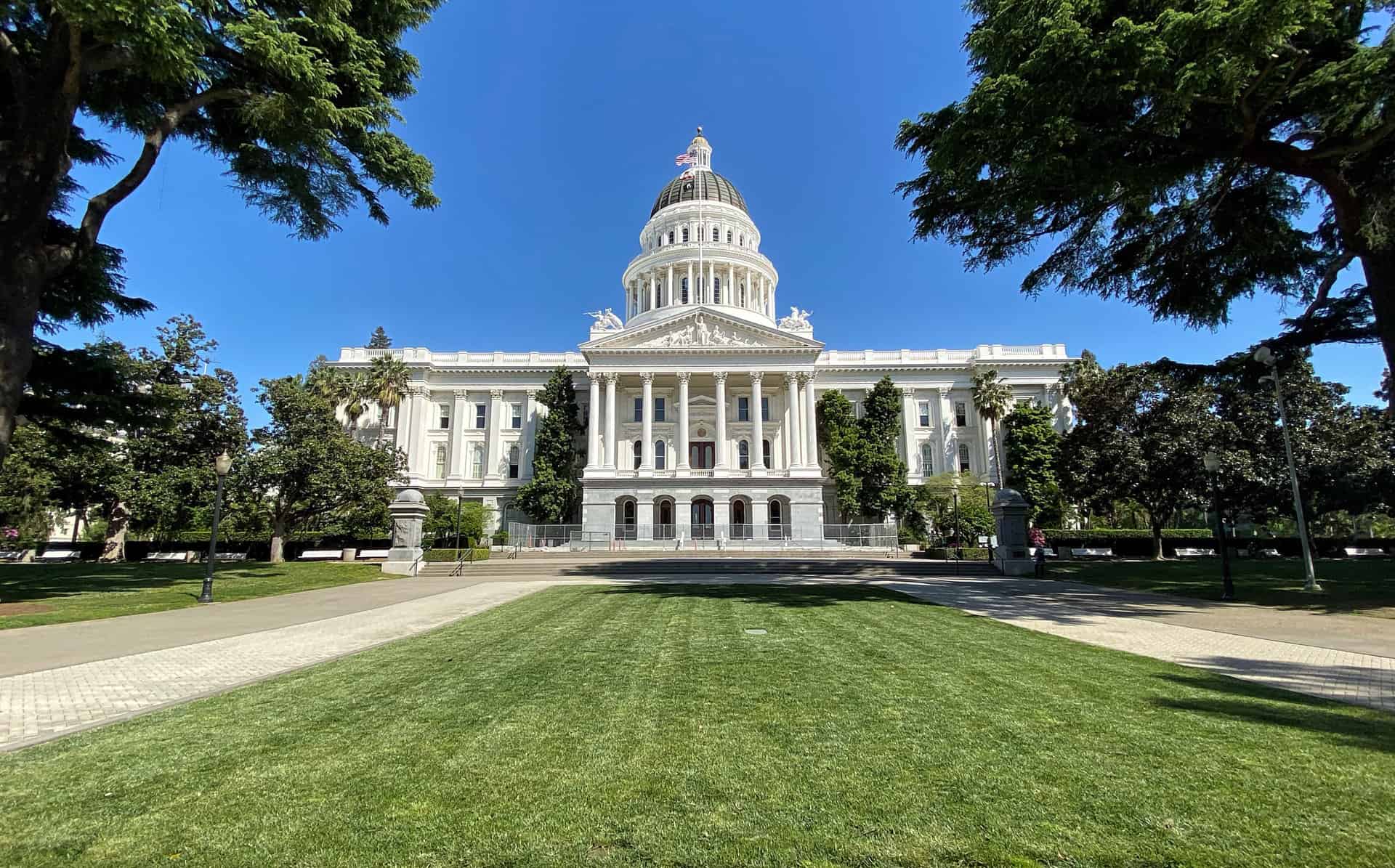How California Propositions 15, 19 & 21 Impact Real Estate
dppre October 29, 2020
Real Estate

dppre October 29, 2020
Real Estate


This year’s statewide ballot contains a number of complex measures, three of which – propositions 15, 19 and 21 – are rooted in the real estate industry, and will have a direct impact on real estate across the state.
What follows is a breakdown of those propositions and DPP’s perspective on the effects they may have on the industry.
PROPOSITION 15
If passed, Prop 15 amends portions of 1978’s infamous Prop 13 to tax most commercial and industrial properties at their current fair market values as determined by county assessors.
How it would work:
Assessors would utilize current tax records to compute the fair market value of existing commercial/industrial properties. Starting January 1st, 2022 the tax rate would be applied only to commercial property owners with businesses employing 50 or more full-time staff. Beginning in 2025, the tax would be applied to all commercial property owners with an assessed aggregate of $3-million-and-above in commercial real estate holdings.
Exempted owners would need to be independently owned and operated, not otherwise influenced by outside interests and would be required to own “real property” in the state. Additionally, they would need to file annually for certification of exempt status. Failure to do so would result in a waiver of their tax deferral status.
Tangible personal property taxes would no longer be charged to small businesses. Businesses with 51 or more full-time employees would be exempt from the first $500k of tangible personal property taxes.
Properties must be reappraised at least every three years. But given capacity, counties may reappraise as frequently as once a year. There’s no cap on the amount of increase of value, and assessed value will stand unless one can prove an abuse of discretion by the assessor.
All single and multi-family residential properties are exempt from the law. Though, if a property is zoned as mixed-use, the commercial portion of the property will be impacted. Agricultural land is also exempt, except for any non-residential buildings residing on said agricultural land.
It’s projected that increased tax revenue would total between 6.5-11.5 billion dollars a year.
The history of Prop 13:
Much like Prop 15, Prop 13 was enacted by the state of California in 1978 as a charter amendment — meaning it amended the State Constitution.
Aside from capping the assessed value of real estate, Prop 13 diverted the property tax revenue stream from local communities to the California Department of Education. Above and beyond removing revenue to local communities for education, Prop 13 has been responsible for the dearth of funds set aside for improving infrastructure across the state.
Prop 15 as a rebalancing measure to Prop 13:
The intent of Prop 15 is to counteract some of the impacts made by Prop 13. Namely by rebalancing the inequities between commercial property owners who invested in their properties recently, and those who made those investments decades ago.
Prop 13 was, at least in part, enacted to protect older residents from being forced from their homes by increased property taxes due to the rising market value of their homes. The problem lies with commercial properties historically having much lower turnover, thereby resulting in commercial properties carrying a vanishingly small portion of California’s overall property tax burden. Since its enactment, Prop 13 has seen the percentage of tax burden on residential property owners across the state increase from 45% to 77%.
Not just residential and commercial properties:
The assumption should not be made that all commercial properties being impacted by Prop 15 are retail/commercial. In fact, the major source of commercial tax revenue in the state derives from corporations such as Disney and Chevron, with their income-generating properties in Anaheim, El Segundo, and Wilmington. These corporations, in some cases, are paying less than a million dollars of taxes on parcels worth over a billion.
Lastly, an uneven commercial tax burden between business owners with identical properties purchased years (or even decades) apart drives a non-competition, which is not good for the state or the economy in general. The more equitable our tax system, the better for business.
How funds would be allocated:
Pay-Fors: The first chunk of revenue would go to covering the cost of the initiative – both reappraisal costs, as well as offsetting decreased revenue from the loss of property owners’ tangible personal property taxes.
Net Revenue:
– 60% of what remains would go to local governments and jurisdictions.
– 40% would go to schools, based on how many students each institution has:
– 10% to community colleges
– 90% distributed as the State Superintendent of Instruction determines.
Potential Concerns:
Increased taxes on commercial property owners may be passed on to tenants.
Major Support for Prop 15
– CA Teachers Association
– The Service Employees International Union PAC
– The Chan Zuckerberg Initiative
Major Opposition to Prop 15
– The California Business Roundtable
– The California Taxpayers Association
– The Howard Jarvis Association
PROPOSITION 19
How it would work:
Prop 19 allows single family home owners 55 and older (including those with severe disabilities) to transfer their tax assessments to any county in the state up to three times. Under similar provisions, such individuals could do so only within 10 counties across the state, and only if they bought a replacement home of equal or lesser value than the property being sold.
Under the new law, qualifying individuals could carry the current assessed value tax rate of their previous home to their new home anywhere in the state up to the fair market value (or sales price) of their previous home. Any assessed value above and beyond that would be paid at the fair market value tax rate.
Additionally, Prop 19 would drastically alter the tax basis for parent-to-child and grandparent-to-grandchild transfer of property. Currently, one can now transfer a principle residence, second home, income property, etc. to a child or grandchild, and that individual retains the parent/grandparent’s tax basis regardless of property’s fair market value. There’s also no current requirement that the child/grandchild occupy the property as their primary residence.
Under the new law, the child/grandchild would need to claim the property as their primary residence to retain the existing tax basis. And if the house the child/grandchild is receiving had fair market value greater than $1 million, a blended tax obligation would be applied — similar to that of a 55-or-older individual buying up.
The benefits of Prop 19:
It’s difficult to determine how much revenue Prop 19 would generate, as it’s difficult to ascertain how many people would take advantage of it. The overall impact, however, would increase the number of homes on the market being taxed at fair market value, and according to legislative analysts, there would be a net gain, providing a potentially significant revenue increase. The increased inventory could also, in time, lead to a buyer’s market, leading to an ease in the housing crisis.
Furthermore, ridding the property tax system of inequities made possible by the transfer of title to children/grandchildren, which have at times been taken advantage of, gives more assurance of equanimity to the average taxpayer.
How funds would be allocated:
Counties would need to calculate their overall net gains/losses resulting from Prop 19.
15% of any gains would go to a Governmental Relief Fund to offset any county reporting a net loss in revenues due to Prop 19.
75% of any gains would go to a California Wildfire Response Fund.
10% of any gains would go to the state General Fund.
Major Support for Prop 19
– The California Association of Realtors
– The National Association of Realtors
– To a small degree, from California Firefighters unions.
Major Opposition to Prop 19
– The Howard Jarvis Taxpayers Association
PROPOSITION 21
How it would work:
Passage of Prop 21 would amend the Costa-Hawkins Rental Housing Act of 1995, and would allow local governments to adopt rent controls on all housing first occupied prior to February 1st, 1995.
Units that become vacant are prohibited from raising the rent by more than 15% in the first three years of the vacancy (plus what may be allowed by local jurisdictions), after which they again become rent controlled. Property owners with two or fewer homes would be exempt.
A similar proposition was on the ballot in 2018 and was roundly defeated. After which, the legislature, Governor and the stakeholders worked to pass a statewide rent control law that established the following:
– Caps on rent of 5%, plus the rate of inflation
– No rent control established for houses built within the last 15 years
– Just cause requirements for evictions
– Exemption of single-family residences and condos
Prior to Costa-Hawkins, rent control cities – such as Santa Monica, Berkeley, and West Hollywood – had rent control boards which mandated the amount a property owner could raise rent on any given unit upon vacancy. If Prop 21 were enacted, it would abolish vacancy decontrol, and put into the hands of political jurisdictions across the state the ordinance capability to enact more strict rent controls.
Some of the negative impacts:
Prop 21 could ultimately lead to an exceedingly complicated patchwork of conflicting, overlapping and contradictory rent control rules across the state. Property tax revenue would likely fall as the value of major rental complexes goes down by perhaps as much as 20%.
Prop 21 would likely exacerbate the current housing crisis, by taking away incentives for building new housing. And while it does bar rent control on structures less than 15 years old to allow for investors/builders/developers to recapture their investment, it’s not likely that timeframe would allow sufficient time for such recapture.
Surprisingly, there is no prevention of evictions in the law. Though if the housing has been built to condo specs, it’s very likely units will be either turned into condominiums or Tenets-in-Common units via the Ellis Act once they have reached the 15 year mark.
Major support for Prop 21
– Housing is a Human Right (an AIDS Healthcare Foundation Entity)
– Tenant’s unions
– The California Chapter of Democratic Socialists of America
– The ACLU
Major Opposition to Prop 21
– Contractors unions
– Real Estate Investment Trusts
– California Apartment Association
– Governor Gavin Newsom
– The Howard Jarvis Taxpayers Association
Stay up to date on the latest real estate trends.


Preserving Heritage Through Meticulous Craftsmanship and Modern Living

In Palm Springs, Architecture Meets Timeless Innovation



We are available to assist you with all your residential needs, please contact us.